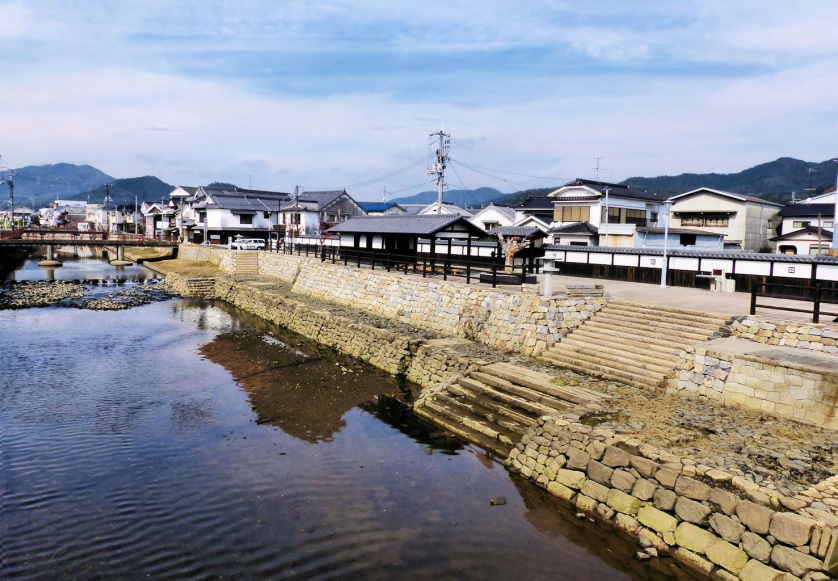There is a main road that goes the whole way to where I am heading to today but instead I choose to take the old Sanyo-do. Even though it is windy and therefore longer it is far more preferable as the road has little traffic and plenty of older houses and shrines etc. There were a lot of previously thatched houses and shrines in the area, though they all had the thatch covered up with tin. I stopped at a big Hachimangu and took a break and eat brunch.
A little later I joined up with a main road and a couple of kilometers along I was stopped by two plain clothes cops!!!! Some old biddy in one of the villages I passed through must have phoned them about my suspicious activity:- walking while foreign. At least they did not give me the third degree like I have had before. It starts to rain so I stop to put on my waterproof and while checking my map and gps realize I am on the wrong road. Not to worry, Googlemaps has this marked as a secondary route so its quicker to go on rather than backtrack. After climbing I take a side road that is quiet and forested. Apparently I am passing through one of the numerous golf courses that dot the country.
And then another disconcerting experience...... the road ceases to exist. This is something that has happened to me many times. At some point there was a road but no more. Its raining more heavily now so I retire to a farm outbuilding to ponder my options. As the rain eases I decide to backtrack and dejectedly trudge uphill to the main road. As I come down the slope and take a left on a busier road the rain stops.
Once I get into Ubeshinkawa I cut across to the pilgrimage temple Sorin-ji. I am not expecting much so I am really surprised to discover it has a wonderful garden. It is almost dusk and in sunlight it would have been more impressive, but it ends up being the silver lining on a cloudy day.




























